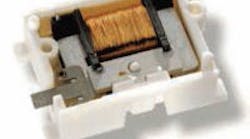Energy harvesting is popular not only because it represents a practical technologyextracting "free" energy from ambient sourcesbut because it is environmentally sound. Energy harvesting methods are of intense interest at present because of the rapid growth of wireless devices and the need to power them through some readily renewable technique. By harvesting energy from the environment and storing that power in capacitors or rechargeable batteries, wireless systems may be rendered free not only of wires, but from having to replace batteries.
Sometimes referred to as energy scavenging, energy-harvesting techniques capture energy from the environment and typically provide a small amount of power for use by low-power devices, such as wireless sensors. Harvesting can be accomplished by many means, including capturing electromagnetic (EM) energy from television and radio broadcast transmissions, turning temperature gradients into power, and using photovoltaic devices to turn sunlight into DC power. Even vibration can be taken advantage of, using a piezoelectric device to generate energy when it is mechanically stressed. Some firms are currently working on biomechanical generators that allow body motion to generate power.
This fledgling industry is already supported by an association, the Energy Harvesting Forum, and offers a variety of innovative products from early leaders in the marketplace. For example, EnOcean boasts the model ECO 100 energy harvester (Fig. 1) for converting linear motion into energy. it measures just 33.3 x 22.0 x 2.0 mm and generates short 5-v pulses. suitable for in-building automation systems as sensors and switches, the ECO 100 can be used with the firm's PTM 230 radio module (Fig. 2) to send short radio telegrams at 868.3 MHz without need of another power source. The radio module generates 10 mW transmit power with amplitude-shift-keying (ASK) modulation to achieve data rates to 125 kb/s.
MicroStrain, Inc. specializes in adaptive energy harvesting for wireless sensor networks, offering comparator switches that can control wireless sensing nodes with only nanoamperes of current. The company has used motion sources such as helicopter control rods to harvest energy by means of piezoelectric devices. MicroStrain's EH-Link wireless node is a self-powered sensor, designed for use with energyharvesting sources such as piezoelectric and thermoelectric generators. Inniwatttech has developed a system based on piezoelectric generation that harvests mechanical energy from roadways, train rails, and runways, converting it into electrical energy.
Because energy-harvesting technology is relatively new, a number of companies offer development kits to help engineers understand how to apply their devices. Cymbet Corp., for example, offers its EVAL-09 energy harvesting kit based on capturing energy from solar sources. Designed for battery-charging applications, it is currently available from Digi-Key. The company also offers a model EVAL-11 energy harvesting kit for capturing energy by means of induction charging. Silicon Labs offers an energy-harvesting reference design for general-purpose use.
Infinite Power Solutions sells THINENERGY micro energy cells (MECs) for energy-harvesting applications. These energy storage cells can be used with energy-harvesting integrated circuits (ICs) such as the AaX17710 from Maxim Integrated Products or the MAX- 17710EVKIT evaluation kit. Microchip offers its XLP energy- harvesting development kit for rapid prototyping of low-power applications such as RF sensors, temperature/environmental sensors, and utility meters. For even more information about energy harvesting, download Design Note 483 from Linear Technology or the "Energy Harvesting" white paper from Texas Instruments.


